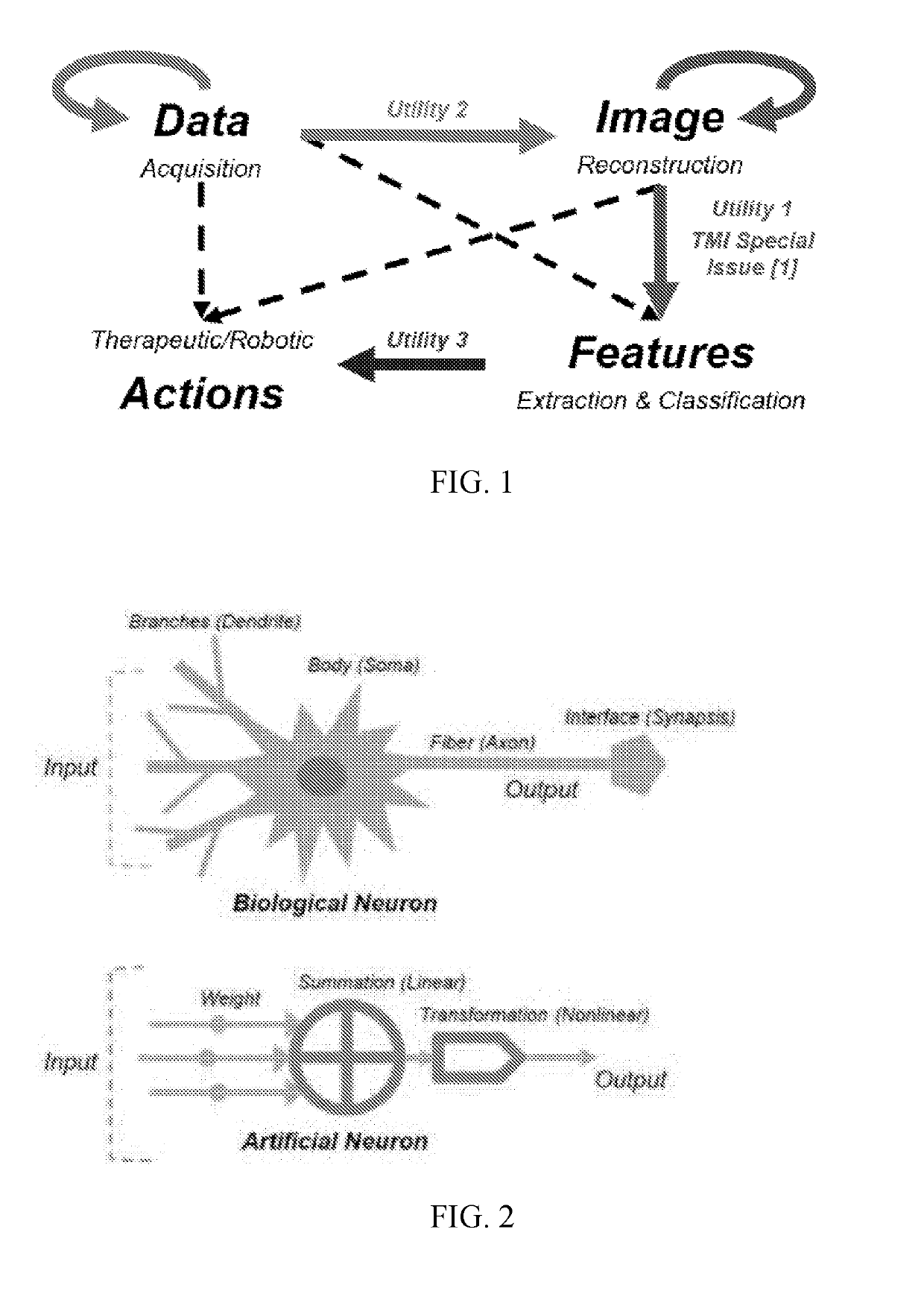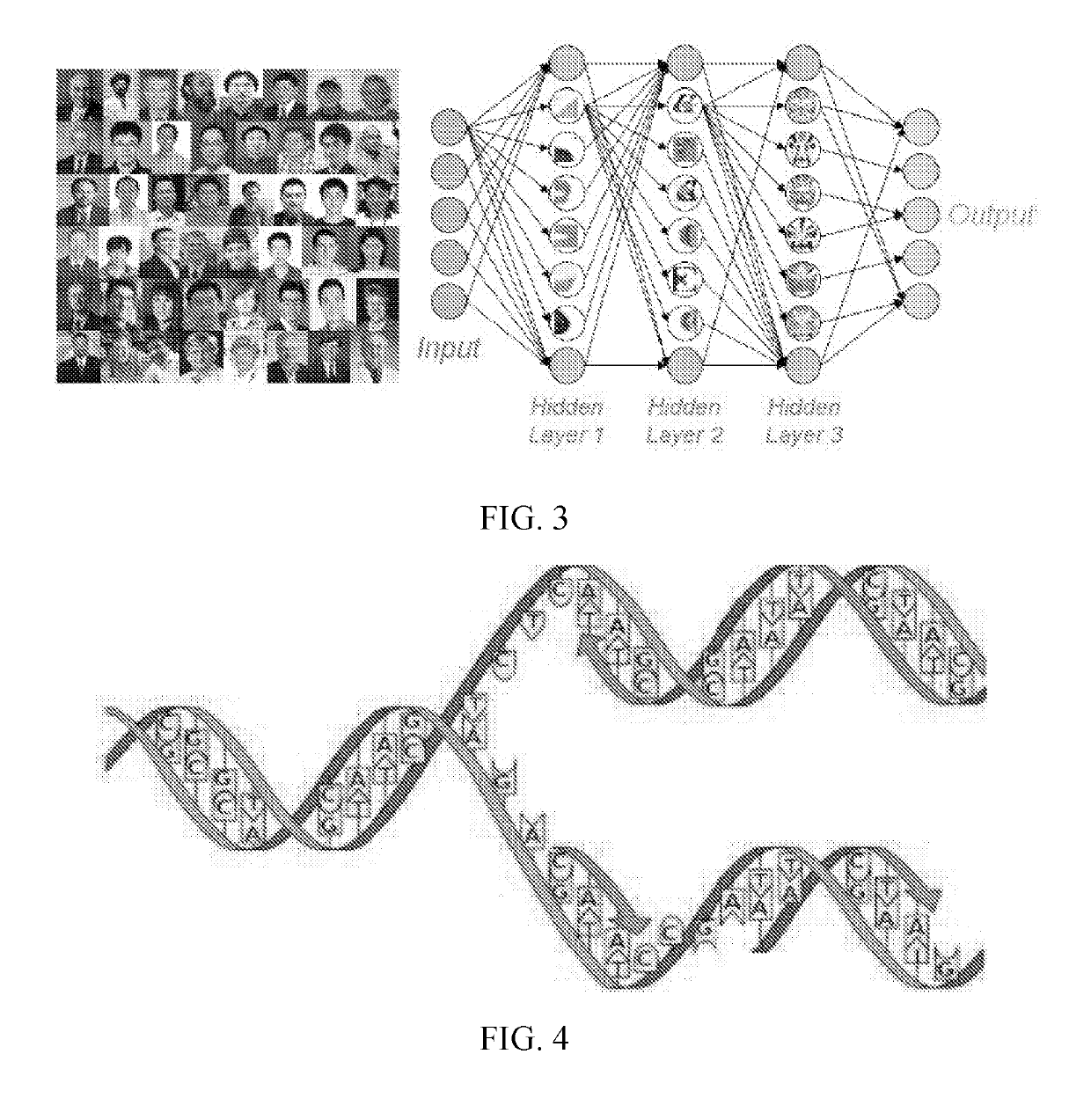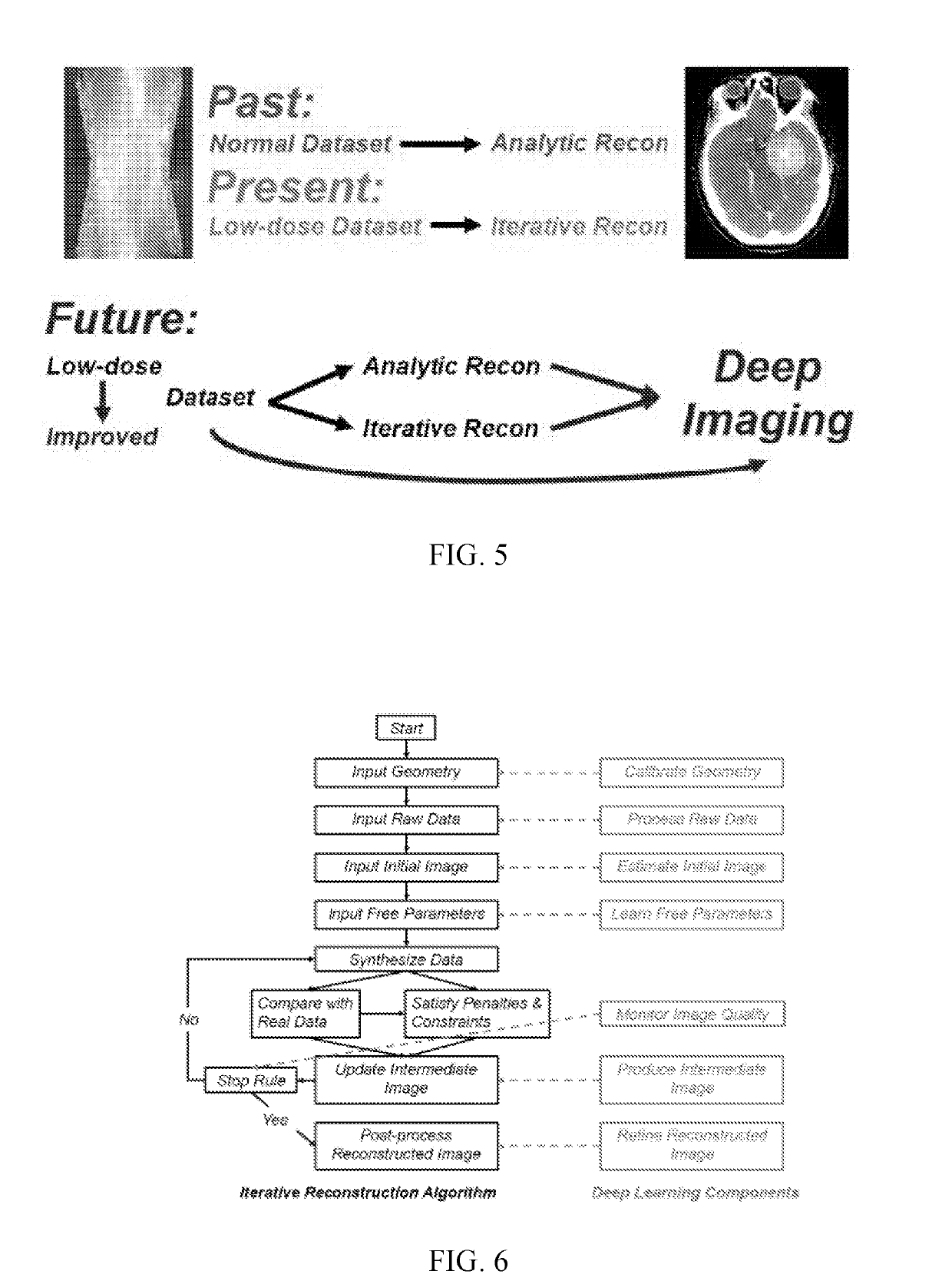Tomographic image reconstruction via machine learning
a technology of tomographic image and machine learning, applied in tomography, diagnostic recording/measuring, instruments, etc., can solve problems such as relative dearth, image formation and reconstruction
- Summary
- Abstract
- Description
- Claims
- Application Information
AI Technical Summary
Benefits of technology
Problems solved by technology
Method used
Image
Examples
embodiment 1
[0074]A method of reconstructing an image from tomographic data (e.g., obtained by a biomedical imaging process, non-destructive evaluation, or security screening), the method comprising:
[0075]performing at least one algorithm on a raw data set of the tomographic data to obtain a reconstructed image, the at least one algorithm comprising a deep learning algorithm.
embodiment 2
[0076]The method according to embodiment 1, wherein performing at least one algorithm on the raw data to obtain a reconstructed image comprises:
[0077]performing at least one conventional, non-deep-learning algorithm on the raw data to obtain an initial image; and
[0078]performing a deep learning algorithm on the initial image to obtain the reconstructed image.
embodiment 3
[0079]The method according to embodiment 1, wherein performing at least one algorithm on the raw data to obtain a reconstructed image comprises performing a deep learning algorithm directly on the raw data to obtain the reconstructed image.
PUM
 Login to View More
Login to View More Abstract
Description
Claims
Application Information
 Login to View More
Login to View More - R&D
- Intellectual Property
- Life Sciences
- Materials
- Tech Scout
- Unparalleled Data Quality
- Higher Quality Content
- 60% Fewer Hallucinations
Browse by: Latest US Patents, China's latest patents, Technical Efficacy Thesaurus, Application Domain, Technology Topic, Popular Technical Reports.
© 2025 PatSnap. All rights reserved.Legal|Privacy policy|Modern Slavery Act Transparency Statement|Sitemap|About US| Contact US: help@patsnap.com



